
DIY Desk inspired by Pottery Barn Printer desk - free step by step plans from ana-white.com
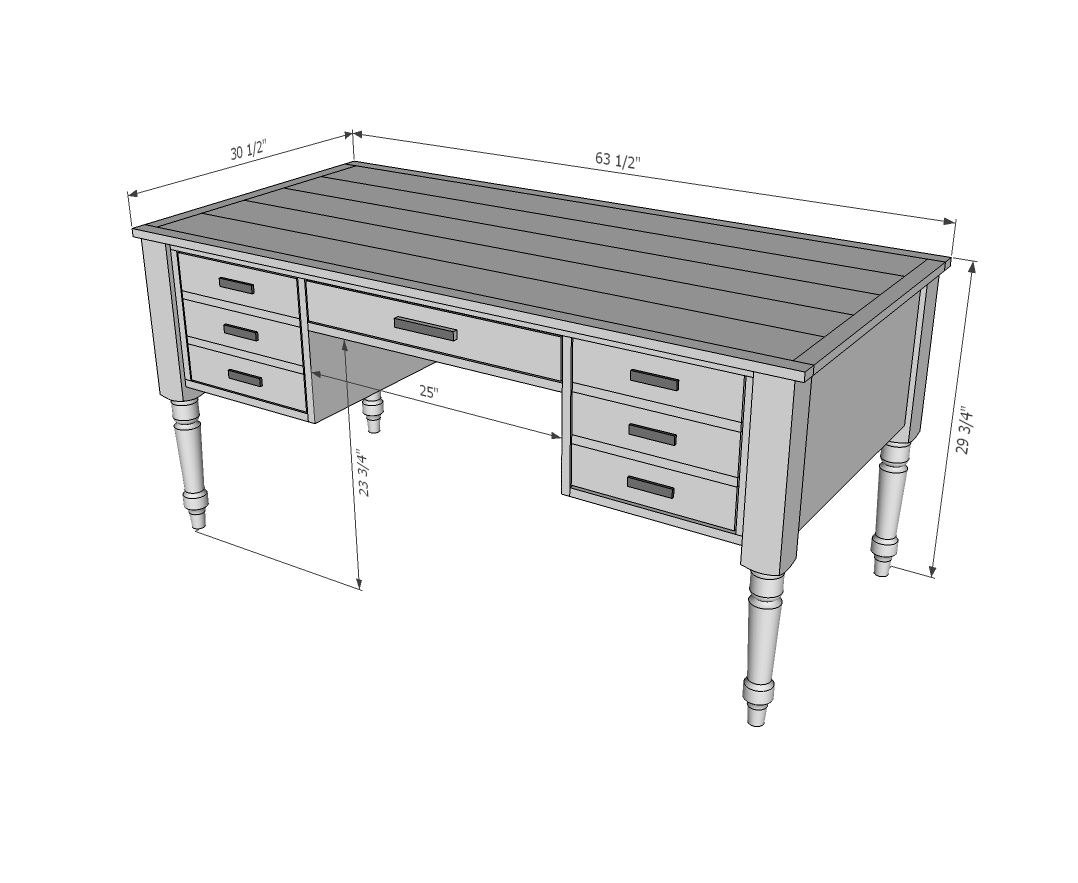
Preparation
1 - sheet of 3/4" plywood (rip two strips 13-1/2" wide x 8 feet long and save scraps for drawer faces)
4 - turned legs (Elisha used these ones)
4 - 1x2 @ 8 feet long
1 - 1x12 @ 10 feet long
1 - 1x3 @ 8 feet long
1 - 1x4 @ 3 feet long
5 - 1x6 @ 6 feet long
1/4 sheet of 1/4" thick plywood (for drawer bottoms)
3 - 16" Euro Drawer slides (the white cheap ones)
1 - 3/4" plywood @ 13-1/2" x 56" (back)
2 - 3/4" plywood @ 13-1/2" x 24" (sides)
2 - 3/4" plywood @ 13-1/2" x 28-1/4" (inner sides - must notch top out for 1x2 - recommend edge banding front edge)
1 - 1x2 @ 56" (front top)
2 - 1x2 @ 12-1/4" (front side trim)
2 - 1x2 @ 14-3/4" (front bottom trim)
1 - 1x2 @ 25" (front center drawer bottom trim)
2 - 1x2 @ 26-3/4" (drawer slide supports)
DRAWERS - CUT TO FIT OPENINGS!!!
For the 2 Large Drawers, can also be made from 1x10 or 1x8 boards
4 - 1x12 @ 16" (sides)
4 - 1x12 @ 11-1/2" (front/back)
2 - 1/4" plywood @ 13" x 16" (bottoms)
2 - 3/4" plywood @ 13-3/4" x 12" (faces)
For the 1 smaller drawer
2 - 1x3 @ 16" (sides)
2 - 1x3 @ 22-1/2" (front/back)
1 - 1/4" plywood @ 24" x 16" (bottom)
1 - 1x4 @ 24 - 3/4" (Face)
TOP
5 - 1x6 @ 60-1/2"
1x2s cut to fit around top
Please read through the entire plan and all comments before beginning this project. It is also advisable to review the Getting Started Section. Take all necessary precautions to build safely and smartly. Work on a clean level surface, free of imperfections or debris. Always use straight boards. Check for square after each step. Always predrill holes before attaching with screws. Use glue with finish nails for a stronger hold. Wipe excess glue off bare wood for stained projects, as dried glue will not take stain. Be safe, have fun, and ask for help if you need it. Good luck!
Instructions
Step 1
Step 4
Step 6
These boards are used for attaching drawer slides to. You may wish to place after drawers are built and you are installing the drawers. NOTE: For multiple drawers, add more where your drawer slides will need to be attached. See Elisha's post here for more details on how she did multiple smaller drawers.
Step 7
Build your drawers to fit your drawer slides and openings. Install drawers with drawer slides. Adjust by shimming if necessary until drawers slide easily.
IMPORTANT: Drawers should be installed inset 3/4" to allow for drawer faces to be added in next step.
For more details on how Pneumatic Addict installed a printer slide out tray and multiple smaller drawers, please go here for more information.
Step 8
Attach drawer face to front of drawers, 1/8" gap around all sides.
For more information on how Pneumatic Addict added overlay door faces, please go here.
Step 9
Build top seperately with 3/4" pocket holes and 1-1/4" pocket hole screws. Trim with 1x2s. Attach to desk top.
For more information on how Pneumatic Addict finished her top, please go here.
It is always recommended to apply a test coat on a hidden area or scrap piece to ensure color evenness and adhesion. Use primer or wood conditioner as needed.



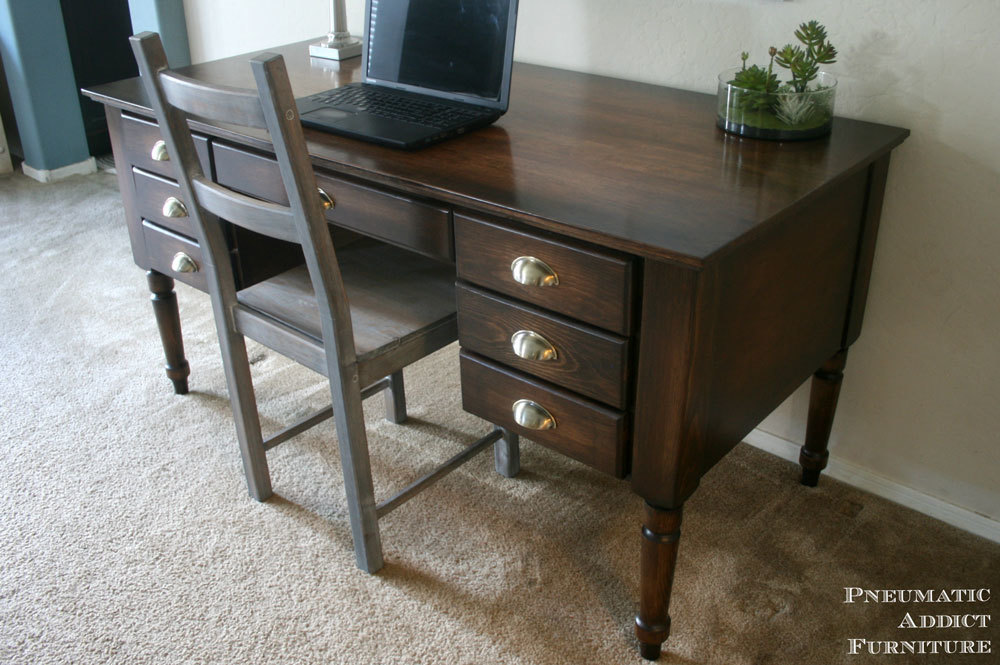
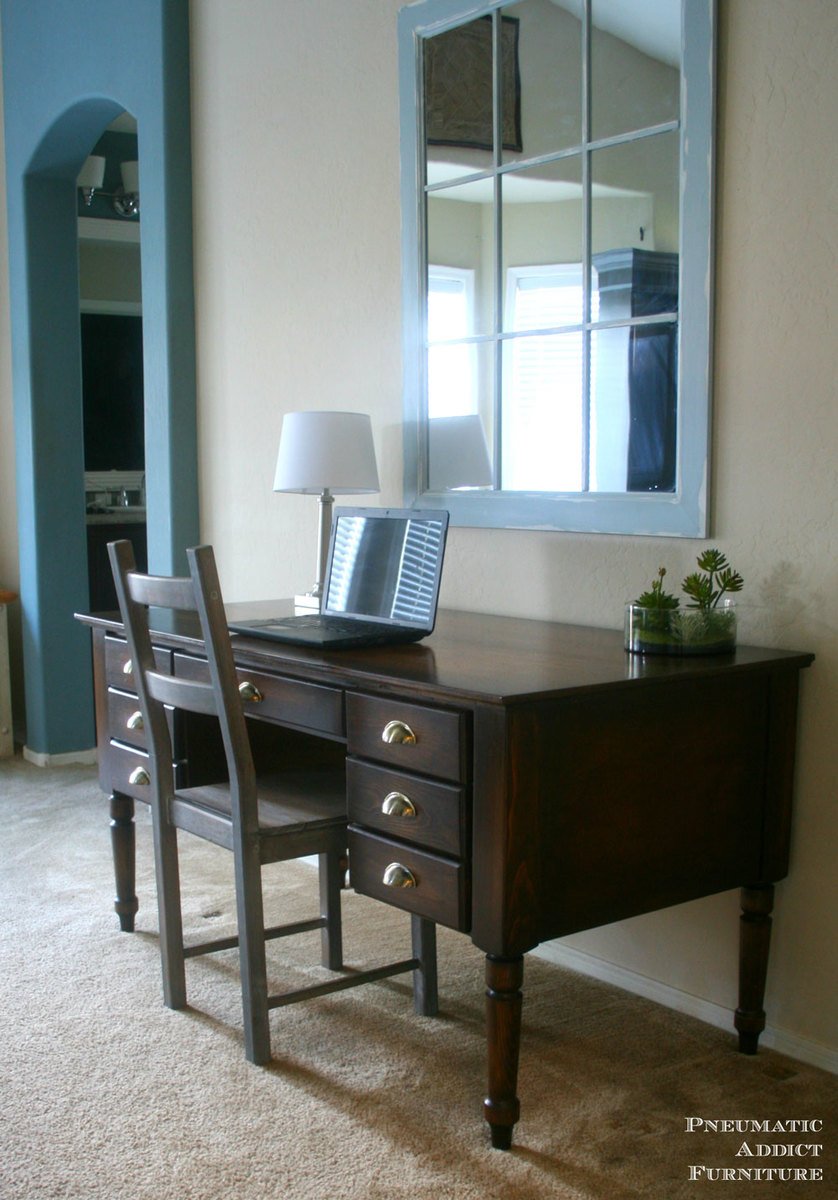


















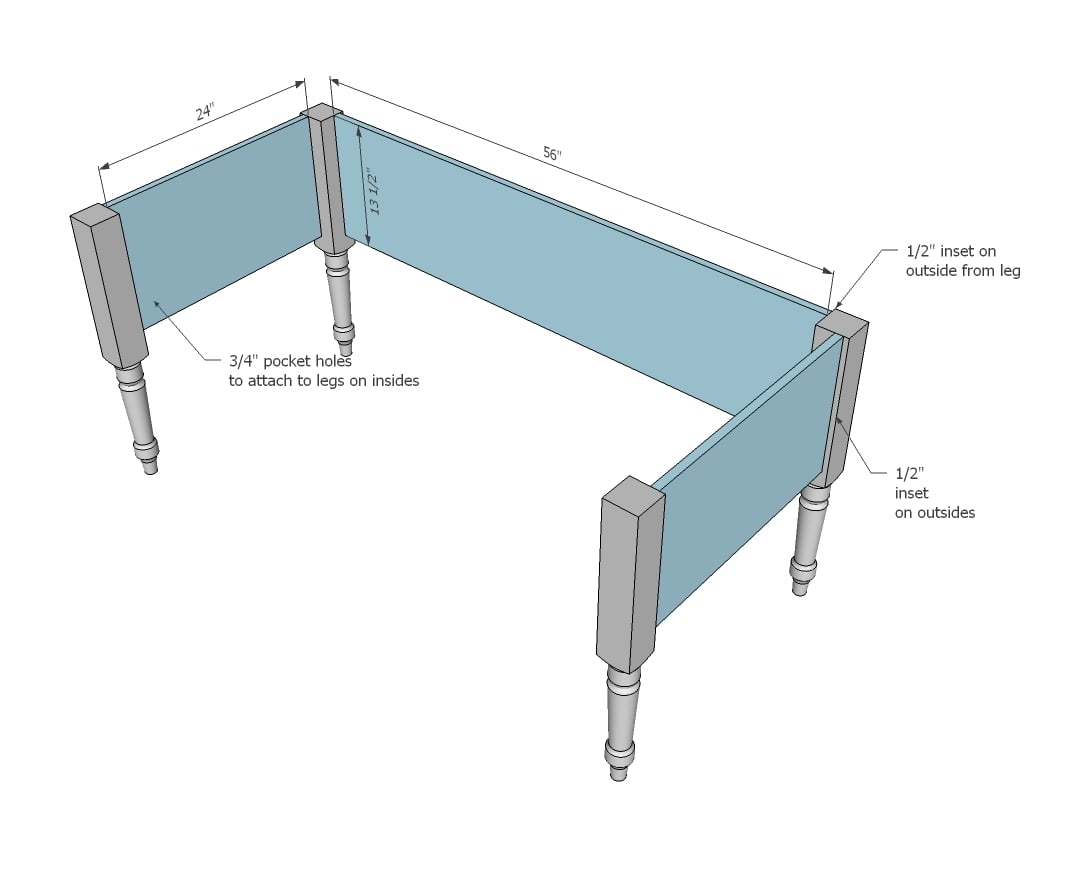

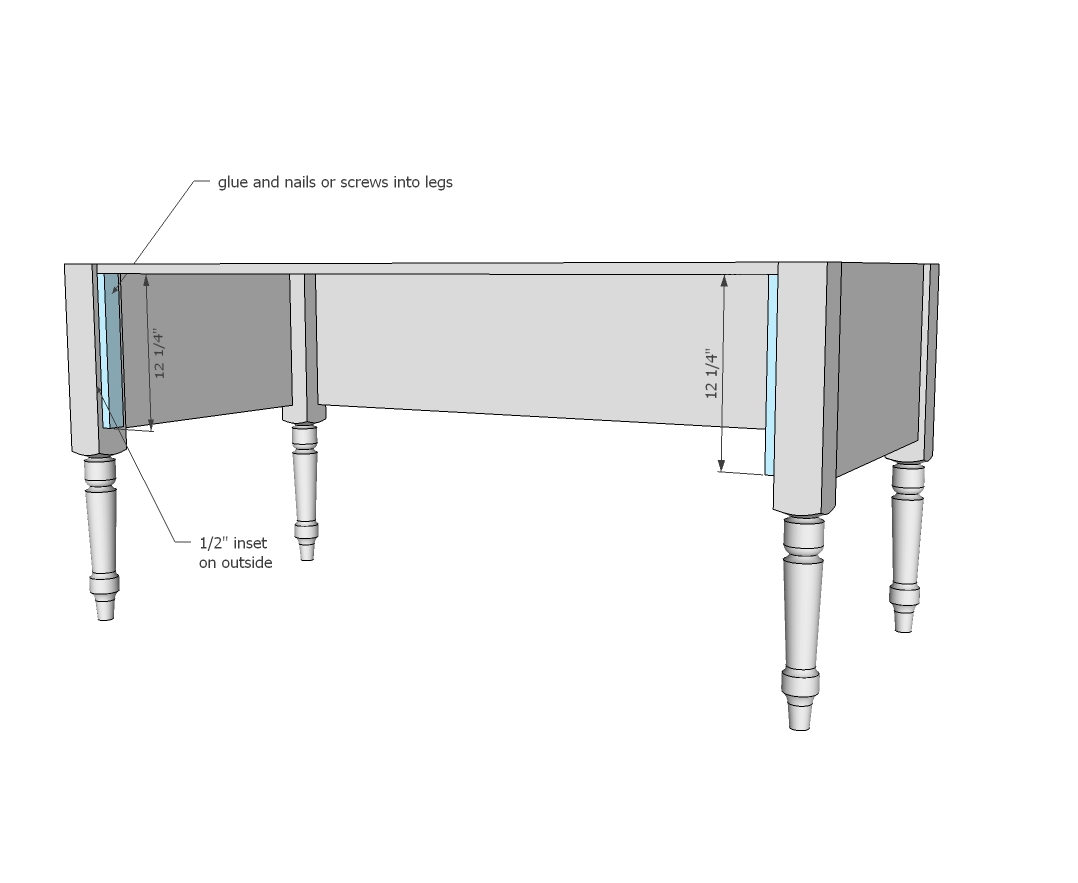



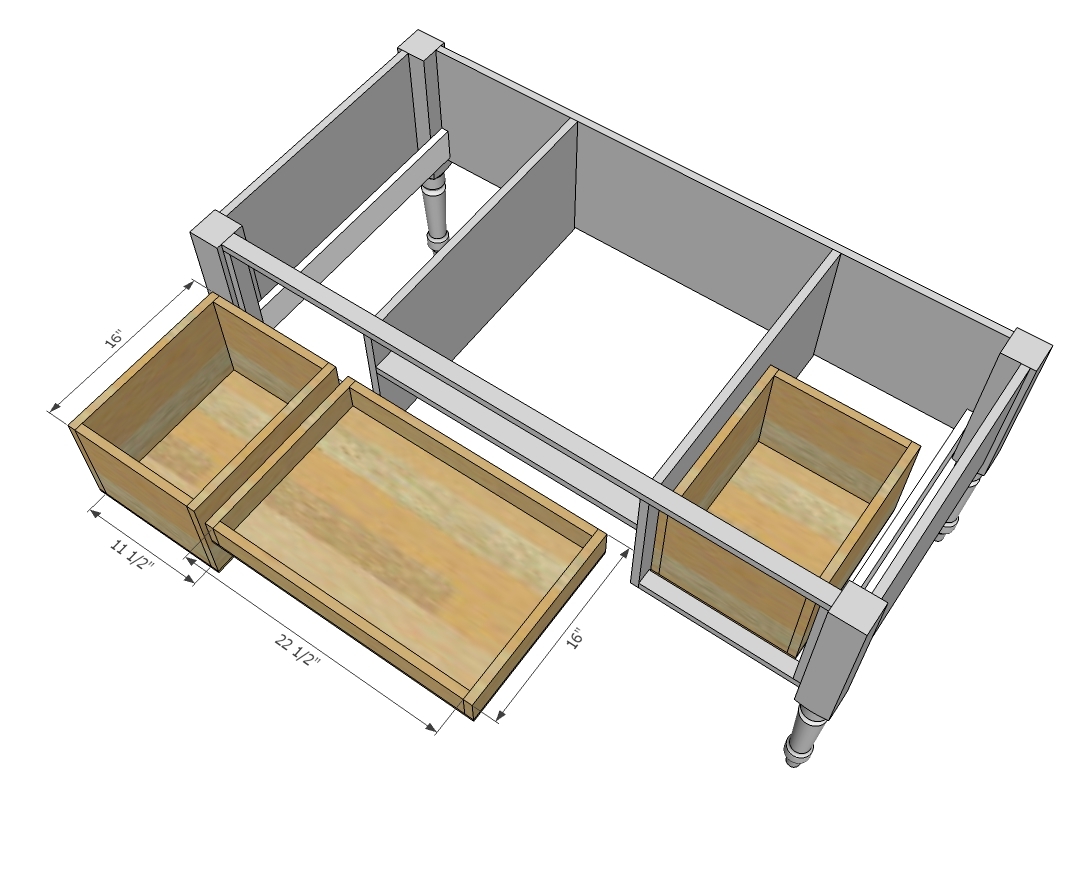
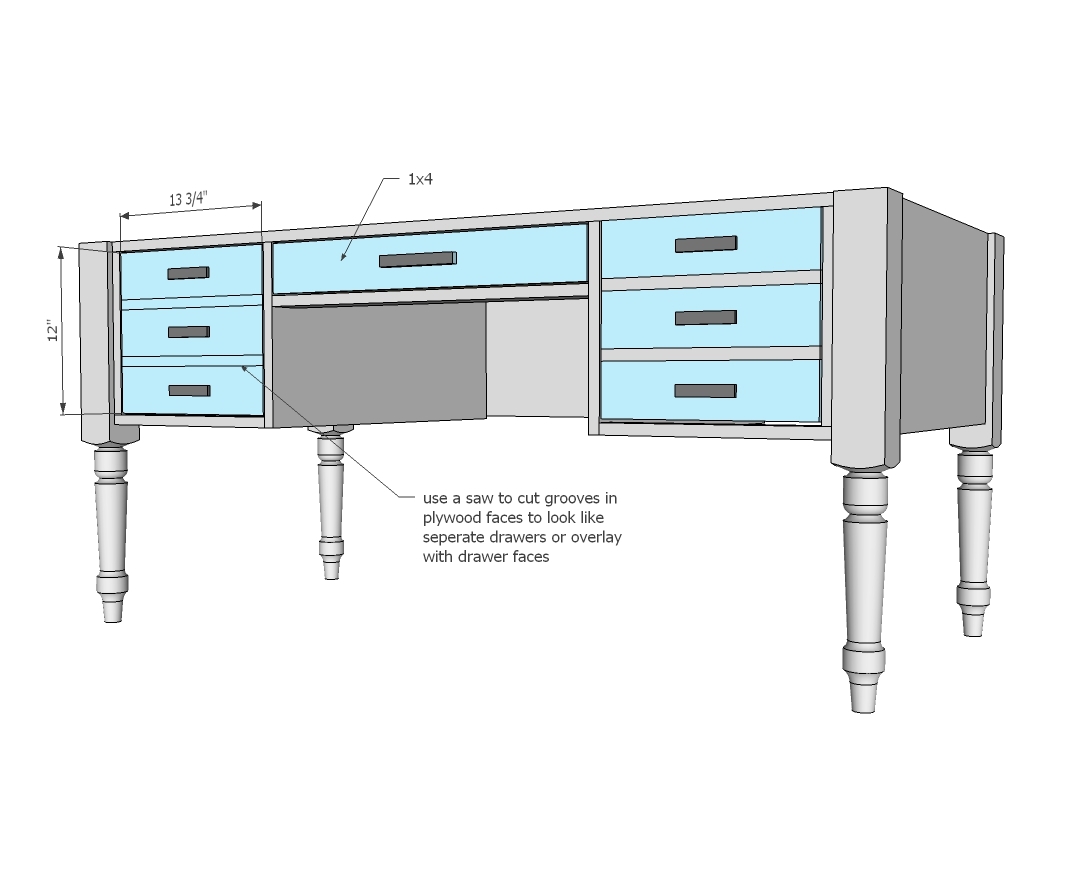
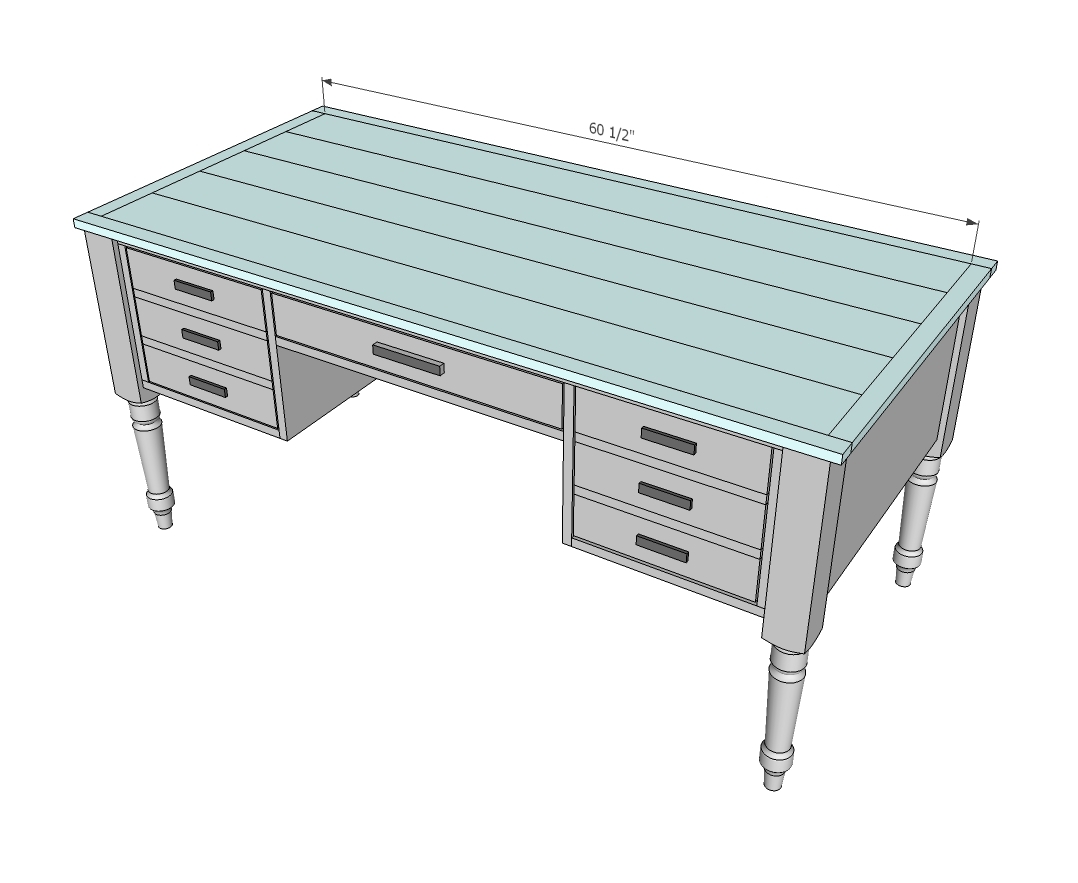

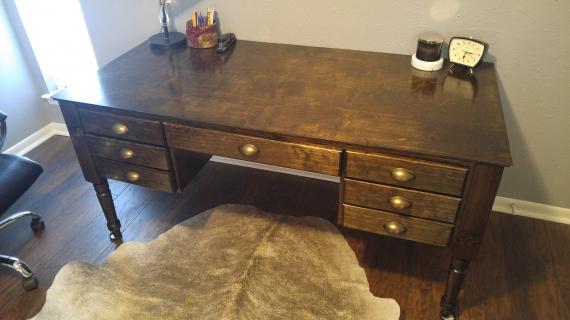
Comments
JoanneS
Wed, 10/15/2014 - 16:06
Gorgeous desk!
Gorgeous desk! LOVE LOVE the finish!
brookifer86
Thu, 10/16/2014 - 10:11
Mind blowing!
I'm in awe that this desk is "homemade"! It looks amazing, that finish is just fantastic. I look forward to seeing more PA collaborations in the future! Going to follow all her pages now :)
jaime19861
Thu, 10/16/2014 - 21:23
Amazing!
Great job! I would never have guessed this was DIY. Thank you Ana, for introducing us to these amazing bloggers!
CGCouture
Fri, 02/05/2016 - 11:23
Which leg to match birch?
We feel in love with birch plywood to make this desk, but I have no idea which of the wood options offered on the Osborne website to choose that will stain similarly to the birch. I'm using rustoleum stain in American Walnut, and want the parts to all be cohesive. Which variety of wood should I choose for the leg, since birch isn't an option?
Thanks!